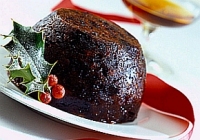December 5th - Christmas in UK
Brazilian cheeses

The vast majority of Brazilian cheeses are made from cow milk, although there are some buffalo cheeses produced as well. Cheese making was brought to Brazil by European migrants, especially the Italians and Germans who mainly settled in the south, as well as the Portuguese.
Of course, the state most famed for its cheeses is undoubtedly Minas Gerais. In fact, one of the most traditional types of Brazilian cheese is Minas cheese (queijo minas), which is the central ingredient in pão de queijo, the little cheesy tapioca buns loved both within Brazil and overseas.
Brazilian cheeses
..........
<p>Photo : Mercado municipal de Curitiba</p>
<p>Photo : Mercado municipal de Curitiba</p>

©Copyright MSCOMM 1996 – 2025. Michèle Serre, Éditeur
-

 Recipes
Recipes
-

 Products
Products
-

 Entertaining
Entertaining
-

 Chefs
Chefs
-

 Hints & Tips
Hints & Tips
-

 Glossaries
Glossaries









